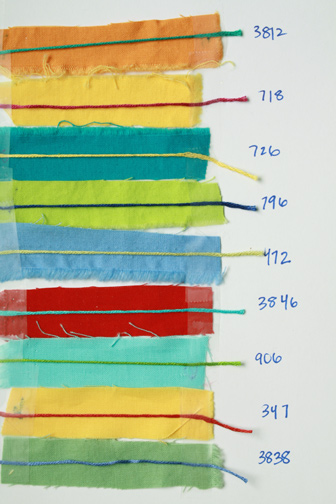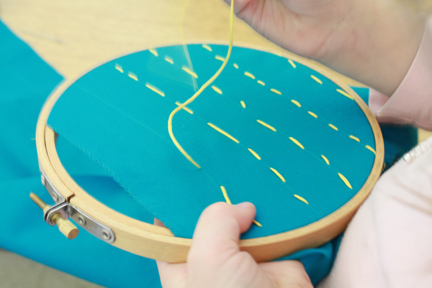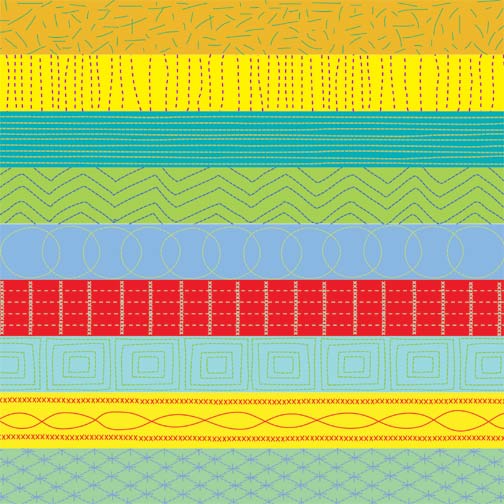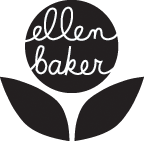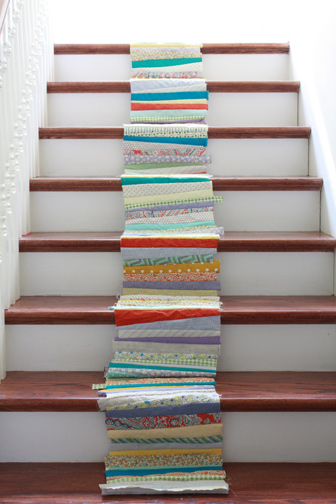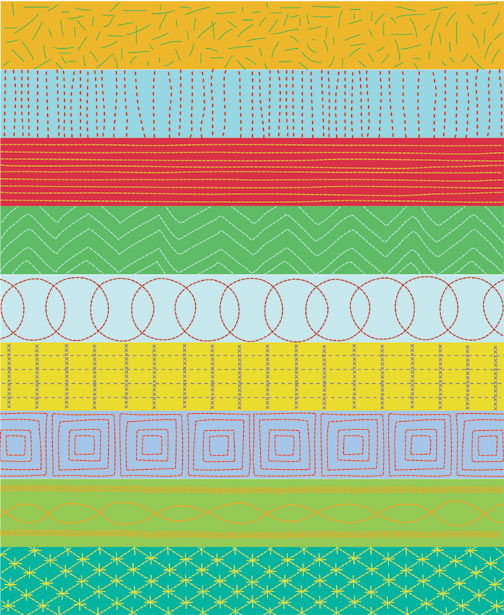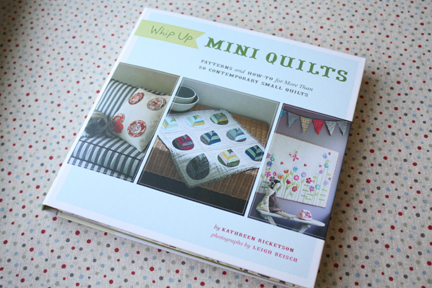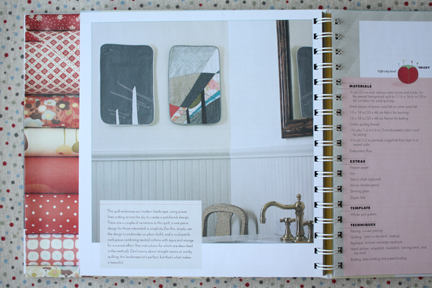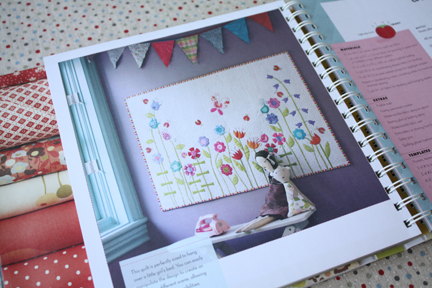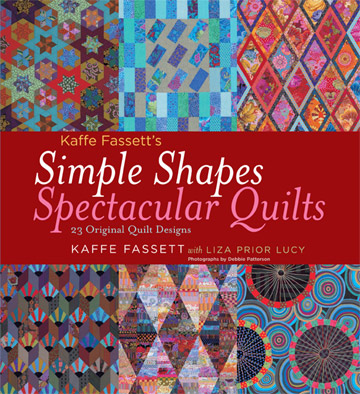
I was excited when STC Craft asked if I’d like to interview Kaffe Fassett for the blog tour promoting his new book Simple Shapes Spectacular Quilts, co-authored with Liza Prior Lucy. They sent me a review copy so I was able to look at all the fabulous quilts.
If you’re not familiar with Fassett’s work, he is a leading textile artist who creates knitting, needlepoint and quilt designs. Head to any quilting shop and you’ll see ladies swooning over his fabric and designs. I’ve always had a great deal of respect for his beautifully designed and technically magnificent quilts shown in his books over the years.
But I must admit, this new book has caught my attention more than the others. I found these quilts to be simpler in design with the focus on geometric form. The book focuses on the sources of inspiration with photographs from around the world of places that have inspired Kaffe on his travels. From a tire yard to a mosaic wall, you can see what sparks his creativity and hopefully you in turn can find inspiration in your own surroundings. You needn’t travel far; just simply pause and look at things in a new way.
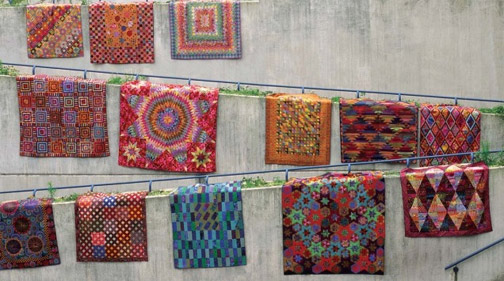
Here is my Q & A with Kaffe:
I understand that you come from a creative family. Many of my blog readers are mothers like myself, trying to nurture creativity in their young children. How did your childhood influence your art?
Interesting question. I’m working on my autobiography at the moment and addressing that question. Mom was a frustrated artist who poured all her creative urges into my education. She saw that I got to the Kabuki Theatre when on in our nearest city or the Balinese dancers or Shakespeare film knowing I’d get so much from them that I couldn’t get from Country life.
It seems to me that your fabrics often feature jewel tones, reminiscent of a traditional Asian color palette. What appeals to you about these colors? How has your interest in color evolved over the years?
When I used to try and do what I thought people wanted I did a very muted pallet. As I got into my studio and did what was closer to my heart I realised I was into a rich depth of colour but I try to evolve and antique faded tones are appealing to me more and more.
Do you make a distinction between decorative arts and fine art?
Not really. I just love what moves me and catches my eye. A great painting or a beautifully designed hat band can equally light me up. I have a great fondness for beauty in every day objects that furnish our lives and make them easier to get through.
With the emphasis on geometric forms, these quilts seem more modern to me than your past work. Do you think about how to make this traditional art form relevant in today’s world?
I don’t know if the quilts are modern or not. I just try to make them as full of life and intriguing as possible and yes the traditional art form of quilts is very relevant to today (in my humble opinion). The form is timeless, we just need to imbue it with our personal harmony of colour.
I see more and more young people trying their hand at quilting, but I think that for many it has skipped a generation. People are picking up skills on their own rather than being taught by their mothers. What do you see as the future of this medium?
I’m afraid I don’t really fret about the future. All crafts are ways to express ourselves in life. I can’t imagine we will ever out grow our need to show how we feel about living. We might get distracted for a little by all the new technology but sooner or later will all feel the need to make something beautiful.
